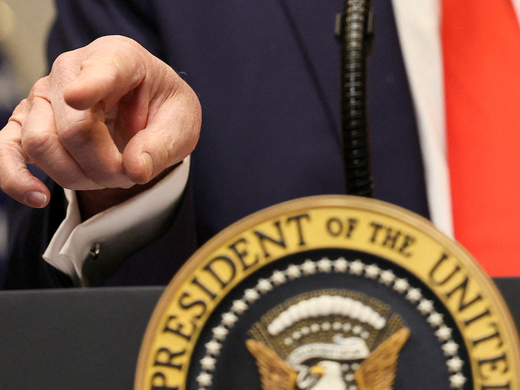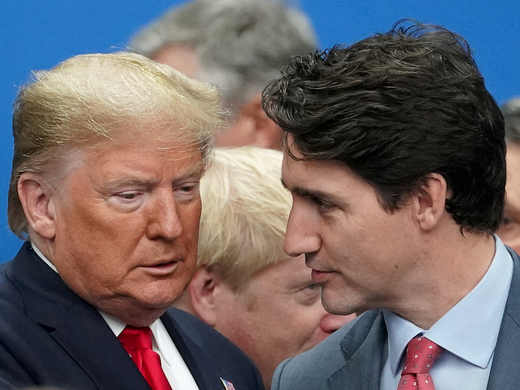Digitalization has now become synonymous with global trade, telecommunication systems, financial inclusion, automated trading, e-governance, e-commerce, cybersecurity, information sharing and critical infrastructure systems. As digital services become ubiquitous, the need for digital governance comes into view, as does the need for global institutions to design global regulations.
Nations globally have responded to the need for digital governance with both sector-specific measures (for example, digital payments) and cross-cutting measures (for example, data sovereignty rules). In some cases, policy measures are only just emerging (for example, taxation of digital multinationals), while in others, the law is already in place, either through legislation or judicial interventions (for example, privacy).
As each country formulates its domestic policies, it is imperative for global institutions and policy-making fora to contribute constructively to the design of global regulations on digitalization.
Two conference papers, one by Henry Gao titled “E-commerce Governance: Back to Geneva?” and another by Douglas Lippoldt titled “Regulating the Digital Economy: Reflections on the Trade and Innovation Nexus,” provide a fresh perspective on the contemporary developments at global institutions for rulemaking on digital governance. Three issues in these conference papers are worth examining:
- the role of major economic (and digital) powers such as the United States, European Union and China in shaping the global policy framework for digital governance;
- the outcomes of global institutions, fora and accords such as the World Trade Organization (WTO), Group of Twenty (G20), Group of Seven (G7), Regional Comprehensive Economic Partnership (RCEP), and Comprehensive and Progressive Agreement on Trans-Pacific Partnership on digital governance; and
- the future of international cooperation in digital governance.
The Role of Major Economies
On the role of major economies, both Gao and Lippoldt underline the influential role of the United States, European Union and China in setting the global agenda, discourse and policy making for digital governance. The outlook of the United States toward digital governance continues to reflect its market-economy, private enterprise-led and trade-oriented approach; the European Union continues to lean toward empowering users, particularly on privacy; and China’s approach is guided by state control and national security considerations.
The influence of American digital multinationals is already visible in the discourse on global digital rulemaking. For instance, Facebook has seeded a review of policies for online content and news, while Amazon’s supply chains have forced a review of local taxes and the significance of “platform neutrality.” Similarly, Europe’s focus on user control and privacy, enshrined in the General Data Protection Regulation (GDPR), has become a model law for many nations to follow. China’s state control and aggressive foreign policy have forced nations to re-examine their policies on technology imports and critical infrastructure.
India seems to have taken a lead from all three. It has let private enterprises flourish, with Indian companies such as Infosys and Tata Consultancy Services becoming trusted outsourcing giants guided by private contracts; its Data Protection Bill takes many cues from the European Union’s GDPR; and it has introduced deeper scrutiny of foreign investments in startups and mobile apps, particularly from China. The Indian government’s decision to ban 59 Chinese apps in June 2020 (followed by 47 more a month later) during the height of the border skirmish between Indian and Chinese forces, shows that geopolitical rivalries can spill over into the digital domain.
India’s approach shows that a fourth model may be emerging. India’s digitalization has been led by public-private partnership. The National Payments Corporation of India (NPCI), the primary digital payments and settlement infrastructure, was established by a consortium led by the central bank as a “not for profit” with shareholding from 56 other banks and institutions. The NPCI is responsible for “Rupay,” the marquis of homegrown debit, credit and prepaid cards launched to compete with Visa and Mastercard. Similarly, India Stack, the technology underlying India’s unique biometric identity system, is a set of “open APIs [application programming interfaces]” developed by an industry coalition but owned by the government or business entity that is using the APIs to provide public digital services such as digital lockers or electronic customer verifications. Another example is India’s approach to data governance. The country is in the process of establishing a Data Protection Authority and appointing “independent data custodians who will be legally entrusted with the responsibility for ensuring sharing of data, instead of relying on private contracts or government directives.”
The Role of Global Institutions, Fora and Agreements
On outcomes of global institutions, Gao and Lippoldt seem sanguine about the capacity, competence and efficacy of global institutions, fora and arrangements in developing rules for digital governance. They exhibit hope in the WTO as an effective negotiating platform, and they expect that plurilateral negotiations on e-commerce can find a place for a more inclusive discussion with WTO members.
For India, the WTO remains the pre-eminent forum for trade negotiations. However, India’s frustration with the slow progress on the Doha Development Agenda, the inability to restore the WTO Appellate Body and the WTO’s apparent lack of interest in finding a permanent solution to the food stockholding program, have diluted faith in the multilateral body as an effective forum for global rulemaking.
For many nations, including India, the WTO-led General Agreement on Trade in Services, established in 1995, is still the basic framework for guiding all services, including digital services. However, since 1995, India has been sidelined by plurilateral initiatives on services (for example, the Trade in Services Agreement) or the more recent Joint Statement Initiatives (for example, for e-commerce) because India’s requirements on digital services and its staunch defence of the WTO’s single undertaking principle are considered a barrier by nations that are restless to make progress on issues beyond those pending from the Doha Development Agenda. Nonetheless, India conceptualized the 2016 Trade Facilitation in Services proposal at the WTO and has the expertise to contribute more substantively on sector-specific regulations (for example, internet access).
Meanwhile, smaller clubs such as the G7 and the Organisation for Economic Co-operation and Development (OECD) are making progress where the formal institutions are in deadlock. The taxation of digital multinationals is a case in point. The issue was first on the G7 agenda, then introduced by the OECD as the base-erosion-and-profit-shifting framework to the G20 in 2015, and the OECD gradually worked to secure the deal on taxation in 2021 with 136 signatories.
The role of specific G20 presidencies in guiding the digital governance agenda is worth noting here. Discussions on digital issues began during the Turkish presidency in 2015, were conceptualized during the Chinese presidency in 2016 and were launched formally by Germany in 2017 with the Digital Economy Task Force, which is now being upgraded to a full working group by Indonesia in 2022.
The Chinese presidency of 2016 published the “Digital Economy Development and Cooperation Initiative” and focused on “innovation” with the publication of the “Blueprint on Innovation Growth and Innovation Action Plan.” In 2017, Germany developed the G20’s digital agenda with the theme of “shaping an interconnected world,” which focused more on those issues of digitization that were of interest to advanced economies (for example, Industry 4.0). The G20 that year published a “Roadmap for Digitalisation” and “G20 Principles for Digital Trade” to serve as the blueprint for the work on this issue and hosted three major official conferences on digital manufacturing, standardization and consumers. In 2018, Argentina promoted the theme of leveraging the digital economy for development. That year, the G20 published “High-Level Principles for Digital Financial Inclusion,” “Bridging the Digital Gender Divide — Delivering Impact,” “Digital Government Principles” and guidelines on “Digital Infrastructure for Development.” As an advanced nation, Japan in 2019 recoiled back to “advanced country” issues such as digital trade, hosting the first joint meeting with trade and digital ministers and focusing on data with the “Osaka Track on Data Free Flow with Trust.” The 2020 and 2021 agendas were overshadowed by the coronavirus disease 2019 pandemic.
Now, there are already signals that India will focus on “digitalisation for development” when it takes over the G20 presidency in 2023. This was one of the main themes for India during its BRICS (Brazil, Russia, India, China and South Africa) presidency in 2021, and in India’s call at the G20 Summit in Italy in 2021.
Beyond the G7 and the G20, the rules on digital trade are being defined by trade agreements. Lippoldt’s comparison of seven trade agreements — the Comprehensive and Progressive Agreement for Trans-Pacific Partnership (2018), the Australia-Singapore Digital Economy Agreement (2020), the Digital Economy Partnership Agreement (2020), the EU-Japan Economic Partnership Agreement/GDPR (2019/2018), RCEP, the US-Japan Digital Trade Agreement (2020) and the Canada-United States-Mexico Agreement (2020) — shows that many agreements in recent years have included sections on data, intellectual property, cybersecurity, consumer protection and digital payments.
The Future of International Cooperation
It is clear that no one single nation, institution or forum has emerged as the primary entity for global rules on digital cooperation. Therefore, rules are emerging from various plurilateral agreements, informal consortiums and private enterprise.
Both Gao and Lippoldt make cogent arguments on how the existing institutions have the promise to deliver (Gao and Lippoldt on the WTO’s role for negotiating e-commerce; Lippoldt on the OECD, the World Bank, and the United Nations Conference on Trade and Development for data). Paradoxically, use of the existing institutions may be one recommendation on which both developed and developing nations may agree; India, for example, has always supported negotiations through existing multilateral institutions.
There is a need to make urgent progress as the agenda for global digital governance is already becoming formidable. Already different, at times contradictory, rules are emerging on cross-border data, artificial intelligence, cybersecurity, cryptocurrency, cyber espionage, digital taxation, e-commerce and online content.
There is also a need for developing a common framework for measuring the digital economy, for which there is no consensus yet. In 2018, the G20 launched a “Toolkit for Measuring the Digital Economy” to start putting guidelines for assessing the contribution of digital activities on economic output, but this will need more support and input.



